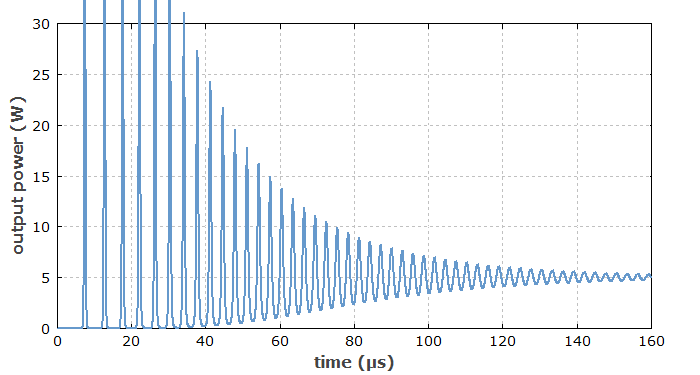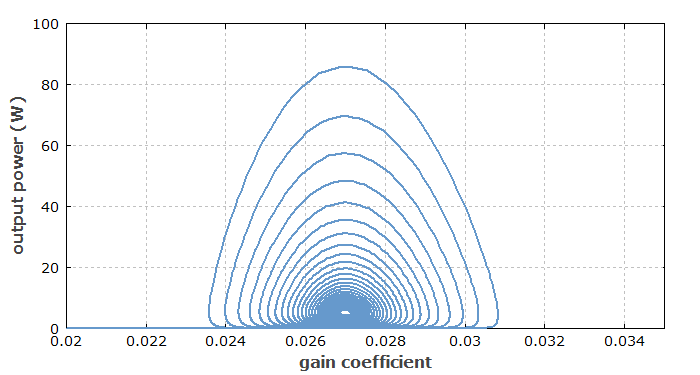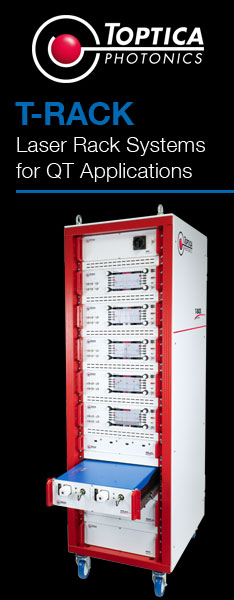Spiking
Definition: the tendency of some lasers to emit spikes of output power, particularly after being switched on
How to cite the article; suggest additional literature
Author: Dr. Rüdiger Paschotta
When the pump power of a laser (particularly a solid-state laser) is suddenly switched on, the laser output power may exhibit several spikes, i.e. energetic pulses, before it approaches its steady-state value via relaxation oscillations, as shown in Figure 1. Similar effects occur when the resonator losses are suddenly reduced, after some time where the gain medium was pumped (→ Q switching).
The duration of the first spike can be of the order of a few times the resonator round-trip time, and is thus often as short as a few tens of nanoseconds. Subsequent spikes then become longer and longer. The repetition frequency of the spikes (sometimes called the spiking frequency) is of the same order of magnitude as the relaxation oscillation frequency.


Pronounced spiking occurs for lasers where the upper-state lifetime is much larger than the cavity damping time. This is the case for, e.g., solid-state lasers based on ion-doped crystals or glasses, particularly when built with a short laser resonator. Spiking may then be reduced, but hardly suppressed altogether, with electronic feedback systems. Gas lasers often operate in an entirely different regime, with the upper-state lifetime being substantially smaller than the cavity damping time, so that spiking phenomena do not occur.
Questions and Comments from Users
Here you can submit questions and comments. As far as they get accepted by the author, they will appear above this paragraph together with the author’s answer. The author will decide on acceptance based on certain criteria. Essentially, the issue must be of sufficiently broad interest.
Please do not enter personal data here; we would otherwise delete it soon. (See also our privacy declaration.) If you wish to receive personal feedback or consultancy from the author, please contact him e.g. via e-mail.
By submitting the information, you give your consent to the potential publication of your inputs on our website according to our rules. (If you later retract your consent, we will delete those inputs.) As your inputs are first reviewed by the author, they may be published with some delay.
See also: laser dynamics, relaxation oscillations, solid-state lasers, stabilization of lasers
and other articles in the category lasers
 |




If you like this page, please share the link with your friends and colleagues, e.g. via social media:
These sharing buttons are implemented in a privacy-friendly way!